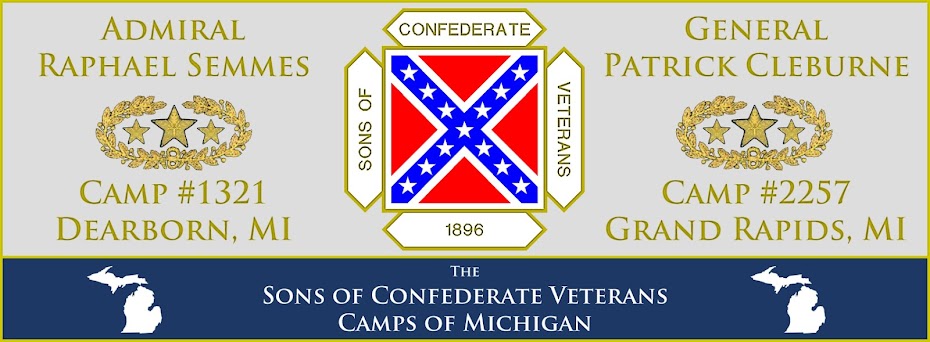Raphael Semmes was born at Charles City., Md., 27 Sept. 1809. A brother of future Brig. Gen. Paul Jones Semmes, Raphel was appointed a midshipman 1 Apr. 1826, promoted to lieutenant in 1837, and to commander in 1855. Between cruises he studied law and in 1834 was admitted to the bar. During the Mexican War he narrowly escaped drowning when his ship, the Somers, capsized in a gale while blockading Vera Cruz. In 1849 he settled in Mobile, Ala., and wrote of his war experiences in Service Afloat and Ashore During the Mexican War. When Alabama seceded, Semmes resigned his commission to become a commander in the Confederate States Navy. Before the outbreak of war, he was sent north to purchase ships and military supplies. He was then appointed head of the Confederate Lighthouse Service. But Semmes had other work in mind: he strongly believed that the South's small navy should include commerce destroyers to weaken the North's overseas trade, and he wanted to command one of these cruisers. Supported by Secretary of the Navy Stephen R. Mallory, Semmes obtained a steamer at New Orleans and converted it into a cruiser, the Sumter, the first of the South's commerce destroyers. During 6 months at sea, Semmes captured 17 American merchant ships before the vessel was decommissioned and sold at Gibraltar early in 1862.
Anxious to acquire more and better cruisers, Mallory had authorized James T. Bulloch to obtain them in Europe. One of Bulloch's ships built in England, the CSS Alabama, was assigned to Semmes, now a captain, who took command at Terceira in the Azores. During the next 22 months, Aug. 1862--June 1864, the Alabama was responsible for 55 prizes captured and sunk--more than any other Confederate cruiser. But as Semmes's actions made him a hero in the South, he became a hated "pirate" in the North, and stopping him became a paramount objective of U.S. Secretary of the Navy Giddon Welles. To Northerners Semmes appeared to relish his role as destroyer, and indeed he was relentless in his mission. For nearly 2 years he succeeded in evading his pursuers, even sinking a U.S. warship, the Hatteras, in a 13-minute battle off Galveston on January 11, 1863.
By late 1863 Semmes was encountering fewer U.S. merchantmen, an indication of his success. The Alabama and the Florida had caused hundreds of U.S. vessels either to remain in port or be transferred to foreign ownership. Semmes's success, however, was not without cost to his health. In addition to the demands of constant vigilance during months at sea, Semmes was disgusted by a lack of discipline in his largely mercenary crew. In June 1864 he brought the Alabama to Cherbourg, France, for major repairs, expecting to be replaced. But, after the arrival of the USS Kearsarge off Cherbourg, Semmes sent a challenge to its captain, John A. Winslow, believing that the 2 wooden vessels were evenly matched. The battle was fought outside Cherbourg harbor 19 June 1864, and the Kearsarge's heavy pivot guns and well-trained gun crews made the difference. After just over an hour, the Alabama was beaten and 19 of the men aboard it killed or drowned. Semmes was rescued from drowning by the yacht Deerhound, aboard which he was brought to England. Stung by his defeat, he returned to the Confederacy, where he was promoted to rear admiral.
In Feb. 1865 Semmes took command of the James River Squadron (3 ironclad rams and 3 wooden steamers), but there was little action until the evacuation of Richmond 2 Apr., when he destroyed his ships to prevent their capture and organized his sailors and naval cadets into a brigade. At Danville, Va., he was made a brigadier general by President Jefferson Davis, although the appointment was never made official. A few weeks later Semmes and his sailors were with Maj. Gen. Joseph E. Johnston when that officer surrendered his army at Durham, N C.
On December 15, 1865, Semmes was arrested and brought to Washington to be tried for treason and piracy. The US. government also investigated charges that he had mistreated prisoners and had violated the rules of war. All charges were eventually dropped, however, and after 3 months detainment he was released. Harassment from the government continued, however, and Semmes was unable to keep positions he had obtained as a college professor and newspaper editor He finally returned to Mobile to practice law. In 1869 he published his Memoirs of Service Afloat During the War Between the States. He died at Mobile, Alabama August 30, 1877.
(Source: "Historical Times Encyclopedia of the Civil War" Edited by Patricia L. Faust)
- NAME: Raphael Semmes
- BORN: September 27, 1809 in Charles County. MD.
- DIED: August 30, 1877 in Mobile, AL.
- CAMPAIGNS: Served as head of the Confederate Lighthouse Services; as Captain of the CSS ALABAMA; Responsible for 55 prizes; Captured and sunk more than any other Confederate cruiser; Also sank the USS HATTERAS (A warship) in Richmond in 1865.
- HIGHEST RANK ACHIEVED: Rear Admiral and Brigadier General
(Later appointment never made official).
[Information originally compiled by Compatriot Darron Williams]
